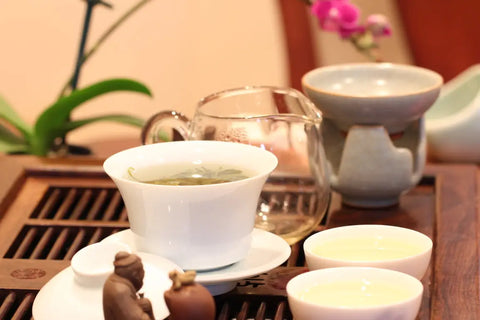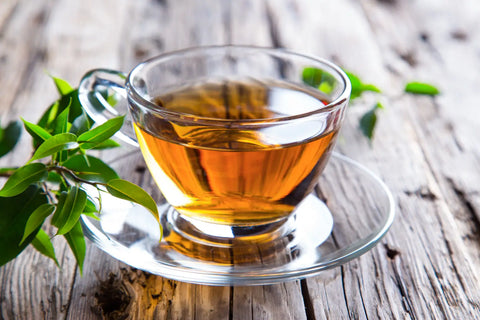
Art of Preparing Tea II
In the Art of Preparing Tea I, we discussed why different tea preparation techniques can be useful and introduced two of them. Today’s entry will focus on Gongfu Style and Western Style, while also commenting a little on Sun Style brewing.
we discussed why different tea preparation techniques can be useful and introduced two of them. Today’s entry will focus on Gongfu Style and Western Style, while also commenting a little on Sun Style brewing.
Before presenting Gongfu Style, I want to recommend consulting our step-by-step Gongfu Tea guide for a more in-depth explanation of the proper technique. Below is merely an overview of each tea brewing method.
Gongfu Style
Gongfu Style is the most traditional way of brewing your tea. There is a very elegant way of doing this, which you can explore in our previously published guide. Maximizing style, your sensory experience, and the value of your tea is what lies at the heart of this way of brewing.
Advantages: Most elegant way to serve tea; Great range of flavors.
Disadvantages: Time consuming; Small servings of tea.
Western Style
General Guidelines:
- Water-to-Tea Ratio: 4-5g / 200-350mL
- Temperature: Variable (Depends on the Tea)
- Teaware: Large Vessel (more than 200mL) or a Tea Strainer and a Teacup or Mug (150-300mL)
- Time: 45 sec. to 120 sec. (Depends on the Tea)
- Tea Type: Best Suited for Any Tea
Western style brewing focuses on strong flavors and large servings of tea. It’s best suited for those who have little time or those who want to make a simple cup of tea, but it comes at the cost of not being able to produce very many infusions.
large servings of tea. It’s best suited for those who have little time or those who want to make a simple cup of tea, but it comes at the cost of not being able to produce very many infusions.
To prepare your tea western style, simply place your tea leaves in your teapot or strainer, pour your hot water over the tea leaves, and then wait some amount of time until your tea is ready.
In general, if you are preparing green tea or white tea, place your leaves in a teapot with a thinner wall, such as a glass or porcelain teapot, or be sure to pair your strainer with a mug of similar density, such as a glass mug. These teas generally get steeped for 45 to 60 seconds at approximately 165-185°F (75-85°C).
Similarly, if you are preparing black tea, oolong tea, or pu-erh, place your leaves in a teapot or mug with a thicker wall that has better heat retention, such as yixing or stoneware. These teas usually get steeped for 60 to 120 seconds at approximately 195-205°F (90-95°F).
Advantages: Strong flavor; Largest serving; Simple setup.
Disadvantages: Very small number of infusions; Least aesthetic.
The Gongfu Remix
General Guidelines:
- Water-to-Tea Ratio: 4-5g / 150-300mL
- Temperature: Variable (Depends on the Tea)
- Teaware: Small Vessel (less than 200mL) and a Teacup, Mug, or Tea Bowl (150-300mL)
- Time: 3x 20. sec.
- Tea Type: Best Suited for Any Tea
The Gongfu Remix is my own invention after experimenting with many different styles. I wanted to find a compromise between Eastern and Western brewing styles, focusing on extracting great flavor from the tea in a larger serving.
To try the Gongfu Remix, set up as if you were going to prepare your tea Gongfu Style but use temperatures similar to Western Style. Next, fill the tea vessel and wait approximately 15-20 seconds for it to brew. Pour the tea into your tea bowl. Quickly fill your teapot again, waiting another 15-20 seconds for it to brew, pouring this tea into your tea bowl. Finally, repeat this process once more. By now, your tea bowl or mug should be filled close to capacity.
For subsequent infusions, you can repeat the above process, aiming for a total brew time of approximately 60 seconds. You will not get as many infusions out of this method as you would with others, but you should still get at least four to six total servings of tea.
Advantages: Great flavor; Large serving; Fair number of infusions
Disadvantages: Still requires more setup than Grandfather or Western Styles; Less infusions than Flash Brewing or traditional Gongfu Styles.
I hope this series has been helpful in explaining the relationship between tea brewing, tea leaves, and teaware.
Please share your favorite method in the comments below!
